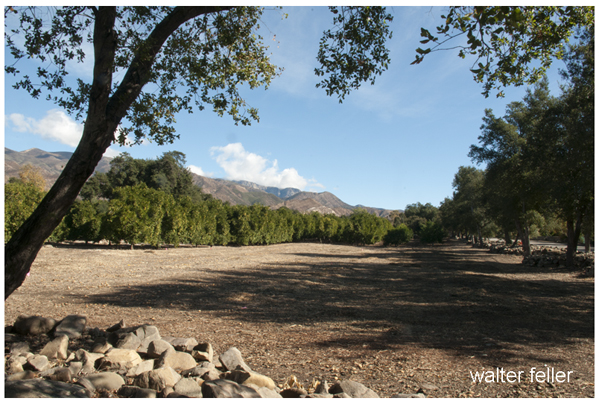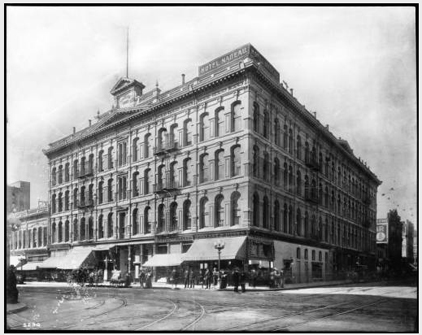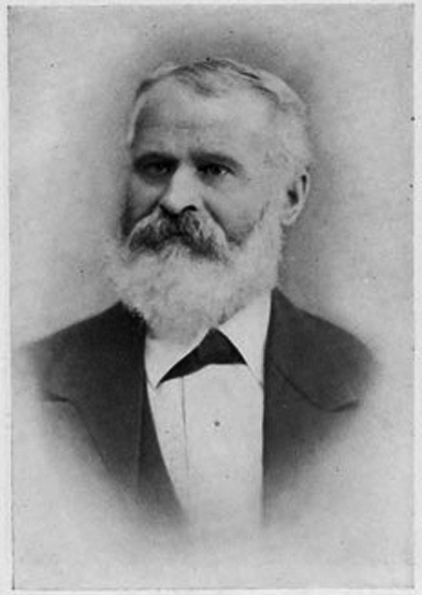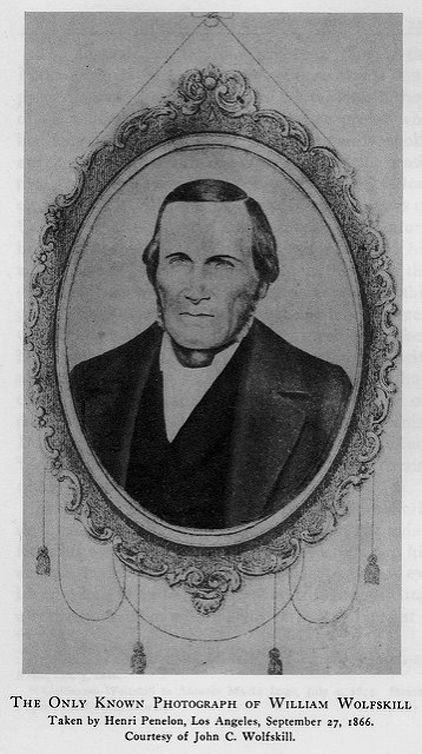Men of Achievement in the Great Southwest
A STORY OF PIONEER STRUGGLES DURING EARLY DAYS IN LOS ANGELES AND SOUTHERN CALIFORNIA
PUBLISHED BY THE LOS ANGELES TIMES - 1904
Chapter V - The Modern Epoch
The history of the Los Angeles of today centers in the last two decades of the nineteenth century. The progress of the years had been slow. When California became American, the city of Los Angeles contained only about 1600 people. The great county of Los Angeles embraced nearly all Southern California, had but little more than 3500 persons. After twenty years, the census of 1870 showed a growth to 5614 in the city and 15,209 in the county. It was only about twice as large at the end of a decade; for just before the census of 1880 was taken, a mining excitement in Arizona drew off many people from Southern California. But influences were at work which were preparing for a period of advancement. The mission fathers had established the fact that Southern California soil was capable of producing marvelous results. The vine, the citrus family of trees, and the olive had been proved perfectly adaptable to the soil and climate of the country. L. J. Rose, J. dc Earth Short) and William Wolfskill had demonstrated this fact beyond the reach of controversy. In 1877 Shorb reported the sale of oranges from a seven-acre orchard at $7000. The crop was marketed in San Francisco. Wolfskill, in the same year, succeeded in shipping a carload to St. Louis, where the fruit sold at a profit, although the freight charges were $500. Such facts as these and the charm of the climate began to be known all over the country, and the eyes of many people began to turn to this portion of the globe. But another mighty energy for the development of the country now began to make itself felt with new force.
Orange grove
The existence of the weekly paper, The Star, has been noted. This was followed by The News, which, in 1867 to 1870, was the only daily in the State outside of San Francisco. In 1871 The Evening Express was founded by Jesse Yarnell, John Paynter and George A. Tiffany, all practical printers. Henry C. Austin, now a Justice of the Peace in this city, was the editor of the new paper, which was Republican in politics. Heretofore the public press had been Democratic. In 1873 C. A. Storke, now of Santa Barbara, established The Herald. In 1875 The Weekly Mirror was founded. This is now the weekly edition of The Times, which was begun as a daily in December, 1881. Joseph D. Lynch and the late James J. Ayres gained control ot The Herald and Express. The local press began to tell the world at large of the many attractions held out by this part of the country to those in search of health or wealth. In 1880 The Herald put forth a midsummer illustrated edition, with articles on the soil, climate, orange culture, grape-growing and other local industries. This went to the ends of the earth. From that day to this, a period of over twenty years, no section of country ever had public prints so generally loyal to their section, so prescient as to the possibilities of a section, and so energetic in making these facts known to the world. Los Angeles city and all Southern California owe more to the local press and to the loyal, enthusiastic, energetic, able and eloquent newspaper men of the section than to any one other influence, if not more than to all other influences combined. The carefully-compiled matter that has been printed about the section in thousands of tons, and the eloquent praises of sun and soil, of scenery and opportunity to make money, have filled the world with detailed and intimate knowledge of all there is here to attract the seeker for health, for wealth or for pleasure.
The completion of the railroad to San Francisco and thence east by Salt Lake, and directly eastward through Arizona, opened the markets of the world to the products of Southern California, and opened this section to the health and pleasure-seekers of the wide world. Affairs were dead enough in 1880, and for two or three years following, but L. J. Rose was paying $20 a ton for grapes and the eastern markets were absorbing California fruits at remunerative prices. Still, of the comparatively few small and cheaply-built houses in the city, hundreds were untenanted. The owners would not rent them, so intent were they on selling and being done with a bad bargain, as they considered them. A house and lot could be had for less than the house had cost to build, and lots could be had at about any figure a buyer might offer. Col. Robert S. Baker, in 1875, had put up the Baker Block, a beautiful three-story structure, which to this day is an ornament to the city. In 1880 it stood almost tenantless. The census of this year showed that there were in the city a little over 11,000 people, and 33,881 in the county, which, by this time, had been cut down by the erection of San Bernardino county, Santa Barbara and Ventura counties, so that it embraced only the territory of Los Angeles and Orange counties as they are now. Things moved very slowly for the next three years, but new blood had begun to come in. In the central part of the State there had been a very substantial increase in the value of lands suitable to the production of grapes or of deciduous fruits. Shrewd men began to turn their eyes to Southern California, where values were still very low. The conditions were slow to change. In 1882 T. D. Mott found some difficulty in selling 120 feet on Spring street by 165 on Fifth, the northwest corner, with a brick house of some pretensions on it, for There were a few venturesome people who began to see the great future which lay before Los Angeles, and launched enterprises in advance of the times. In 1882 Remi Nadeau purchased the southwest corner of Spring and First streets and put up the Nadeau Hotel as it stands today. So far was this from the business center that no one would rent it for hotel purposes. It was used as a rooming-house for several years. A couple of years later the late Maj. George H. Bonebrake and Hon. John Bryson bought the opposite corner and put up what is now the Los Angeles National Bank building. It was in 1888 that these same two men bought the Spring-street school site, on the northwest corner of Spring and Second streets, and put up what is now the Bryson building. For this they paid the city $1000 per front foot. Meantime, L. J. Rose erected a three-story building on Main street nearly opposite the Baker Block. Other business blocks continued to be put up near the business center. Most of the business was still confined to the district lying between the Plaza and First street. The County Jail was an old adobe, where the People's Store is at the present time, on the corner of Spring and Franklin streets. The late Louis Phillips of Pomona paid $500 a foot to the county for this property, and some time later erected the building now on it. In 1884 or 1885, Earl B. Millar erected a three-story brick building on the west side of Broadway, about midway between First 4and Second, and there were few people in the city who did not wonder if he would ever get a tenant to occupy it. By this time new people were coming in pretty freely. Railroad fares from the East had fallen a little. N. C. Carter and Phillips & Judson, men who had come here, one for health, the others for business considerations, began to go East and gather up parties to visit California on reduced rates for railroad travel. More houses continued to be built. There came a demand for building lots more remote from the business center, and tracts as far out as Pico and Figueroa streets were put on the market. The newcomers began to put up more pretentious houses. The cottage costing $1000 to $1500 gave place to two-story houses costing $2500 to $3000; but the progress was not at a rapid pace until quite up to 1885.
The Santa Fe Railroad Company had been building in the Southwest for some years. The road had reached The Needles on the Colorado River, where it connected with the Mojave branch of the Southern Pacific. They had built to Guaymas in the State of Sonora, Mexico, and had a connection with the Southern Pacific at Nogales.
One day the late C. P. Huntington, who had charge of the financial affairs of the Southern Pacific, found himself in need of a million dollars. He needed it at once, and he needed it very much. Money was not easy. He obtained what he wanted by selling the Mojave branch of the road to the Santa Fe, the Guaymas branch of the Santa Fe being turned over to the Southern Pacific. The Santa Fe proceeded to build from Barstow through Cajon Pass to Colton. Having made trackage arrangements with the Southern Pacific, access was had to Los Angeles. California oranges had begun to reach the markets of the East. At New Orleans in 1884 the California fruit had taken the first prizes. The newspapers had been for five or six years heralding the praises of the section to willing ears all over the country. The railroads made more and more favorable rates to the Coast. Personally-conducted excursion parties became frequent and were well patronized. The eastern railroads sent out regular agents to work in Los Angeles. A war of railroad rates brought fares lower and lower, until they reached $25, and for months people could come to the Coast for that much. The fare had been as high as $150; then $100. For a few hours on one day the rate for a trip across the continent fell to $1. Then a truce was made, but the rates remained very reasonable as compared with what they had been. In 1886 nearly all the railroads were running excursion trains at low rates, and the people poured in. The newcomers knew of the army behind them, and began to gather up "corner lots" and "choice residence sites" in all parts of the city. The pioneers, who never dreamed of what was coming, were willing sellers. The "tenderfeet" held for a rise, and made those who came a week later pay it.
So the "boom" began.
 Exterior view of the Nadeau Hotel on Spring Street and First Street, Los Angeles, ca.1905
Exterior view of the Nadeau Hotel on Spring Street and First Street, Los Angeles, ca.1905The four-story hotel features arched windows all throughout the building on the second floor and up. In the center of the building facing the street on the left are small decorative pediments above each floor from the second floor and up. At the top, above all the other small pediments, is a larger and wider pediment. Further above it is yet another pediment where underneath it displays "Nadeau 1883." The first floor consists mostly of shops. Some stores have striped cloth awnings covering their window fronts.
Remi Nadeau opened the hotel in 1882 with a grand ball attended by the Southland's elite. He bought the site in 1872 for the 'un-heard' of sum of $20,000. The Nadeau boasted of the first electric elevator to be installed in Los Angeles.

Remi Nadeau

William Wolfskill
Wolfskill grew hundreds of lemon and orange seedlings, which he secured from the San Gabriel Mission. And while his early success showed that there was at least a regional market for citrus, it was not until the introduction of the navel orange in the 1870s that propelled the growth of California citrus, which fueled the economic and social development of California.*
History of citrus at a glance*
* The history of citrus in California
Mar./Apr. 2010 California Country magazine
Story by Ching Lee